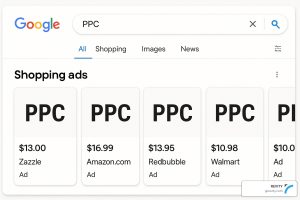Using marketing videos is becoming more prevalent today than it ever has been. This is due in large part to the availability of media on smartphones.
Most of the world has a smartphone which allows them to access the internet and download apps for entertainment and leisure. Social media and movie streaming are now standard among today’s population.
Video platforms offer businesses an opportunity to expand their reach by producing video content on various platforms.
Here at Revity, we are expanding our approach to traditional marketing. We innovate our strategies to get the best return for our clients. Our media department is constantly looking for ways our clients can remain relevant among their consumers.
Ian is the Media Director for Revity Marketing Agency. He didn’t initially start in marketing; he started out animating characters in video games with the goal of moving into film production. He changed the focus of his career when he began doing more work for marketing agencies.
He ran his own animation studio for a few years and transitioned himself back into marketing. He networked into a position here at Revity, where he ran the company’s art, film, and animation efforts.
As the agency expanded, he helped reform the roles of art and media and was instrumental in finding talent to take on art while he handled film and animation.
To date, Ian oversees the creation of everything related to film, audio, and animation here at Revity. His work and experience have been instrumental in developing Revity’s upcoming podcast series, and he continues innovating in his work to make our client’s products that perform well and make money.
Here is what he has to say about how important videos are in marketing strategy and how business owners can plan and create their own media.
Question: How can I use marketing videos to grow my business further?
Answer:
There are so many different avenues you can take with marketing videos. Really, it comes down to providing your audience with valuable content.
Your marketing videos should do two things. First and foremost, they should be concentric to your business. Second, they need to make your viewers better people for having watched your videos.
It’s a pretty broad question because there are so many ways you can use marketing videos for your business.
You can create videos that talk about who your business is and what you’re trying to accomplish. You can talk about your products and services and show how your industry is changing and how to adapt. You can explain how you make people’s lives better and so on.
Another thing you can do that nobody is doing right now is to create thank you videos. The purpose of these is not to promote our company or a call to action; it is just to express genuine appreciation for viewers watching and participating in our videos.
Always keep your target audience in mind. Stay consistent with your messaging and industry.
Question: What Is The Best Outline For Marketing Videos?
Answer:
Section One — Introduction
When you’re outlining a marketing video, best standard practices dictate that you present the villain or the problem of the story. This hints to the audience about what they will see in the rest of the video.
Section Two — Branding
According to best practices, the second segment of the video is to present the title of your show, the name of your channel, or whatever branding you want to do for your own company and the content you are producing. Usually, this second part is where people put a title card with their name or company on it.
Section Three — Main Segment
You’ve hooked people now into what’s called raising the dramatic question. You want to enter late and leave early. Pose a question and don’t answer it immediately; fill the time between introducing the question and giving the answer with information your audience needs to understand the answer in the right context.
Once you’ve answered the first question, raise another dramatic question. If you keep going through the cycle like this, you’ll be raising a series of hooks throughout your entire video.
You can play around with the format and start asking more questions at the beginning so that the audience knows they are going to get more helpful information than they expected.
Section Four — Conclusion and CTA
The final section wraps up the answer to the question you proposed in section one and answered in section two. Here you get into the application and can slip in something promotional for your business. Reiterating what your channel is and who you are as a company.
You should add a call to action that is appropriate for the format you are using. If you are not directly calling your audience to do business with you, invite them to download a blog, subscribe and like, watch your recommended videos, etc.
The Best Length For Your Marketing Video
Try to keep your video between a minute and a minute and a half. You can occasionally make a shorter video of 30 to 40 seconds, but those are usually for very specific platforms. The one-minute format is good because if it is interesting enough, you can get a full watch before abandonment. So, try to stick between 60 and 90 seconds.
If you are getting a lot of clicks on your video and high abandonment, it’s probably because your videos are not interesting enough or aren’t useful to the viewer. Analyze your success and failure to see what works and what doesn’t, and try to make your next video just a tiny bit better.
Question: How do I make a marketing video?
Answer:
Outline Your Project
When you’re creating a marketing video, you need to plan out a beginning, a middle, and an end. It sounds really dumb and straightforward when putting it out like that, but that’s the fundamental outline you should be starting with.
Establish Your Audience
The first and foremost thing you need to do when creating a marketing video is to know who you are talking to. The reason you have to do this is so that you can learn what kind of information your target audience wants. Learn the specific bits of information they’re looking for that you can address and teach them.
Determine Your Tone
After you know who you’re talking to, figure out the tone of your piece. Are you building your audience up? Are you educating them? Are you being satirical, fun, or witty? Do you want them to take any special sort of action? Identify the core reason the video exists.
Create A Rough Draft of Your Script
Once you’ve identified your target audience and tone of voice, you have enough information to start making a rough script.
One thing you should understand about scripting is that one page of script is equal to about one minute of video or animation. On page doesn’t seem very substantial, but it ends up filling time well.
Now that you have your ideas on paper, you can begin solving some of the creative obstacles that reach and resonate with your audience. You can start brainstorming the platforms you use, play around with different animation ideas, and figure out how you will draw in your audience with the audio and visuals.
Be sure you know where you’re going to be launching your video because that affects how you format the end piece. You’ll need a different format for something on YouTube than for TikTok or Facebook.
Create Your Video and Launch It
Now that you have everything planned out, it’s time to execute the concept. Cast, direct, film, record audio, make animations and edit your video until it’s ready to produce.
Release your video to the platforms your audience hangs out on. If you have tools that show you how many views and interactions your video gets, use them to monitor the progress of your video and use what you learn with that to make your next marketing video better.
That brings up another point. One thing that is huge is making sure you are consistently posting content. Get in the mindset that you’re not going to stop at creating just one video.
I say this because it’s going to drastically change how you write your script, how you budget for films, and what is realistically feasible to shoot in a timeframe.
The quantity of the content you create will outweigh the quality. When it comes to exposure, it’s better to create a bunch of lower-quality videos with greater reach than to create one perfect video that never gets seen.
Question: How do I make a thumbnail so that more people want to click on it?
Answer:
We say we shouldn’t judge a book by its cover, but we totally do this all the time. You need your thumbnail and title to look relevant to the searcher’s intent and interesting enough to click.
Let’s explore intent. I can’t tell you how many times I have scrolled through a feed and almost clicked on something just to realize the thumbnail didn’t deliver what I was expecting.
My advice, if I could use that word, would be to make your thumbnail and title relevant to your video. Scour the landscape of your competitors to see how they are designing theirs. Once you have a good read, build your thumbnail opposite of what you see so that it stands out.
If you notice a pattern, like a certain color pallet or filter, being used a lot, mix it up with something different. This way, when someone is scrolling through a feed of similar-looking content, their eye stops on the one that looks unique and different: yours.
For your titles, maybe use this as an opportunity to introduce a dramatic question or tease at an answer to that question. Be sure you validate your viewers’ curiosity by introducing the purpose of your video fast, so the viewer doesn’t end up clicking out of your video.
It is common for a channel to update the thumbnail but keep the content the same. Remember to swap out your thumbnails every so often, especially as trends in your niche change. You want to ensure your thumbnail and titles stand out from your competition.
Question: Are marketing videos becoming more important?
Answer:
In my opinion, people don’t read the internet; they watch it. We are constantly watching things, be it at home in the bathroom, cooking, or taking a break from work, and—nobody would admit to this—people are even watching things while driving. So, video marketing is only going to get more valuable.
One of the most powerful features of video is that when someone is watching something, to them, whatever they are watching is happening then and there. The face time is also invaluable because you can communicate intent better.
Considering that, let’s say you get a text message that reads, “I’m outside your door.” What are you going to think or do? You’ll probably get scared and approach the situation cautiously. Now, imagine it’s a video of your best friend saying, “I’m outside your door.” Our reaction is going to be completely different.
Facetime allows us to express ourselves in context and build rapport. Your audience can interpret your genuine nature better. So, in my opinion, as media becomes more prolific in our lives, video marketing will become the secret sauce of B2B and B2C connections because there is no replacing one-on-one interaction.
Reading body language is more important than we give it credit for. So much can be miscommunicated across text. Using marketing videos limits the possibility that your message will be misinterpreted. Overall, it can do a lot to help us build trust with our viewers.
Video Marketing With Revity
As video marketing becomes more prevalent, we are looking for new ways to create content for clients that helps them successfully market their businesses.
If you are looking for a professional team to help you create stunning content, contact us to see how we can help you achieve your video marketing goals.
































